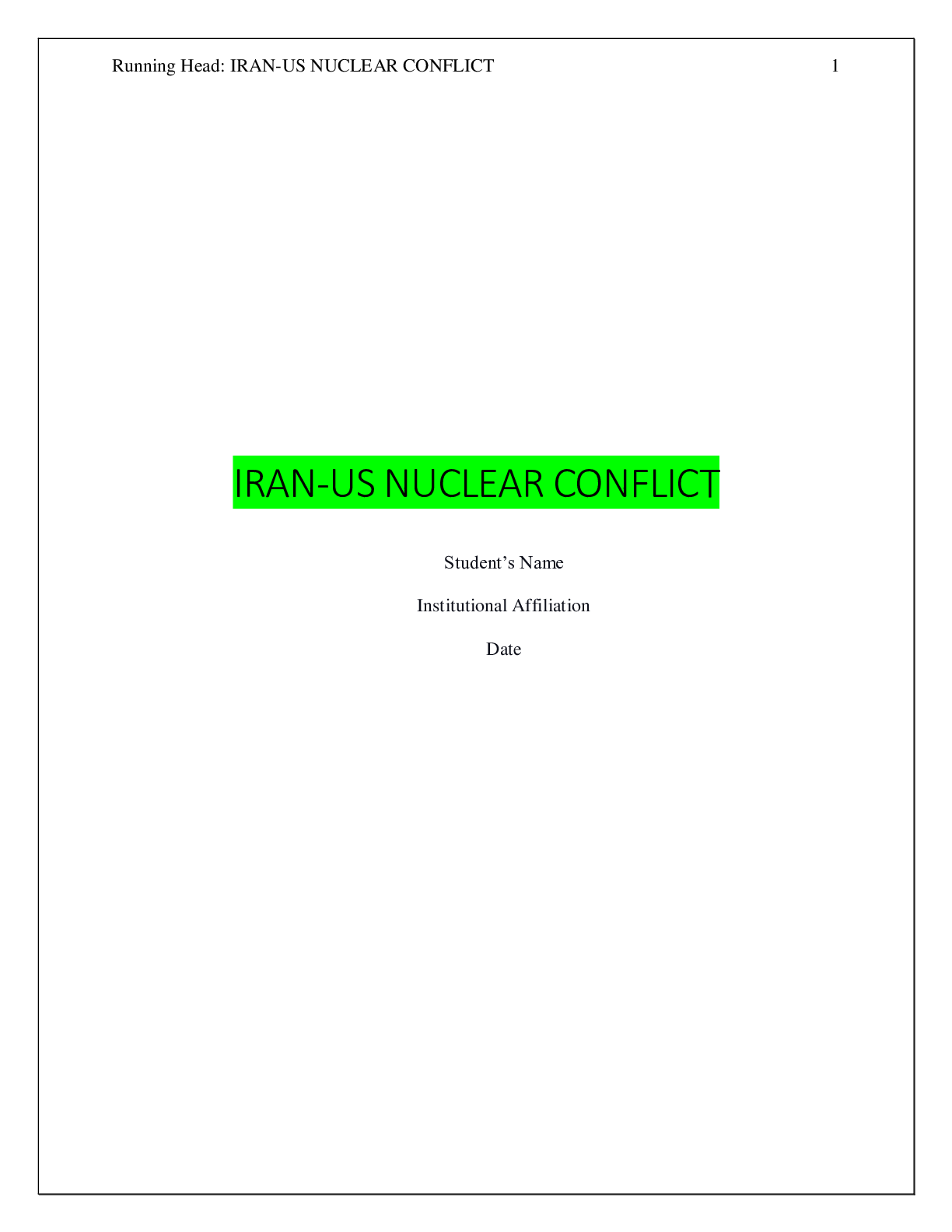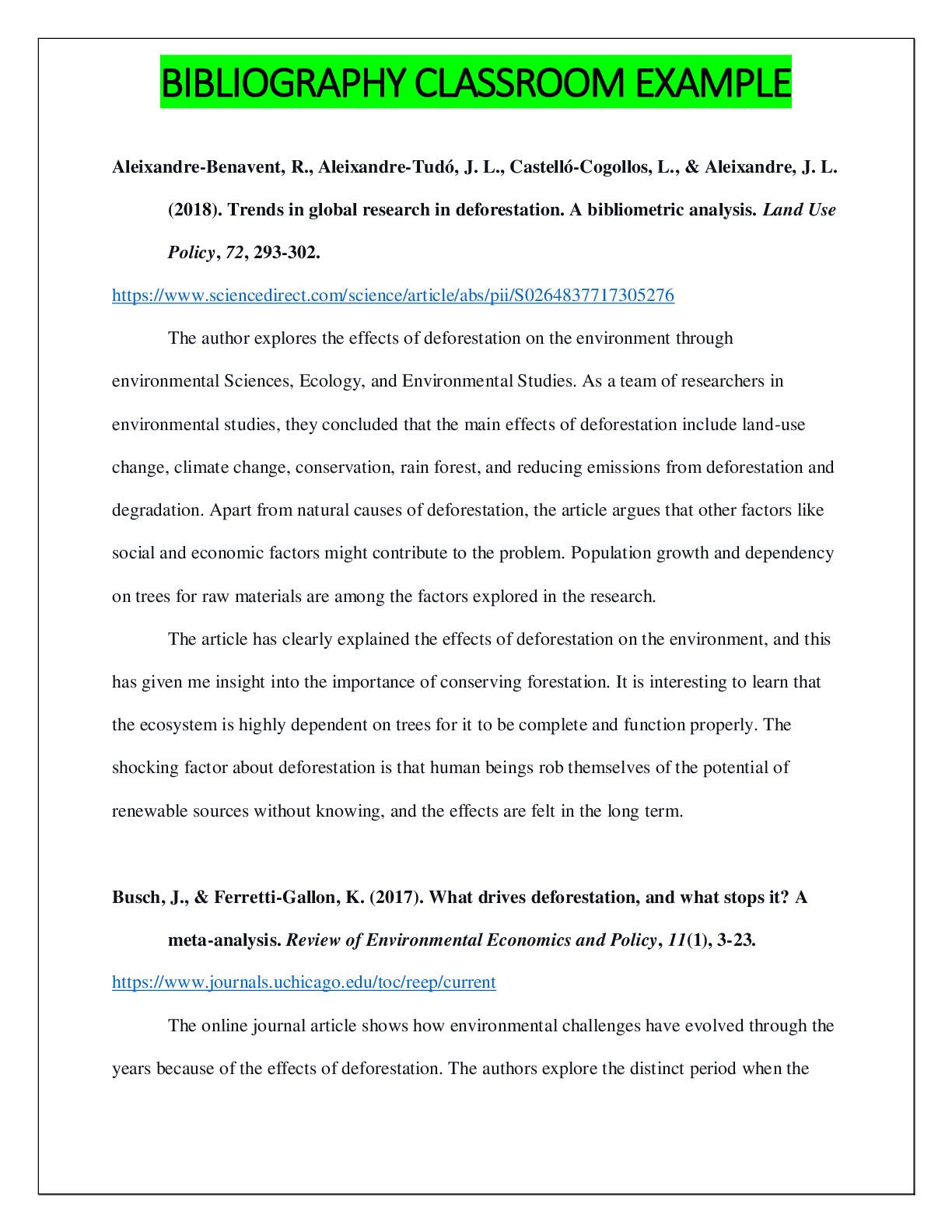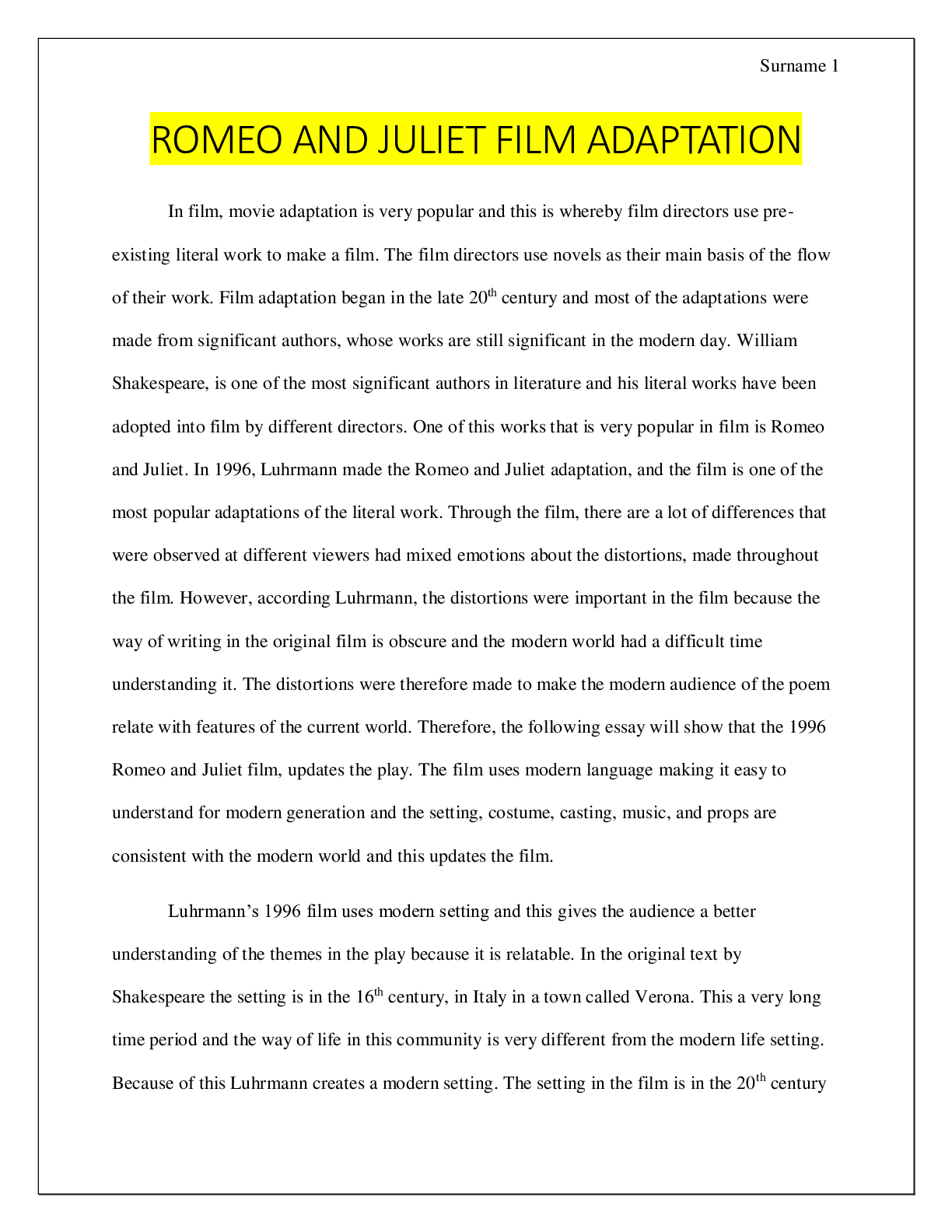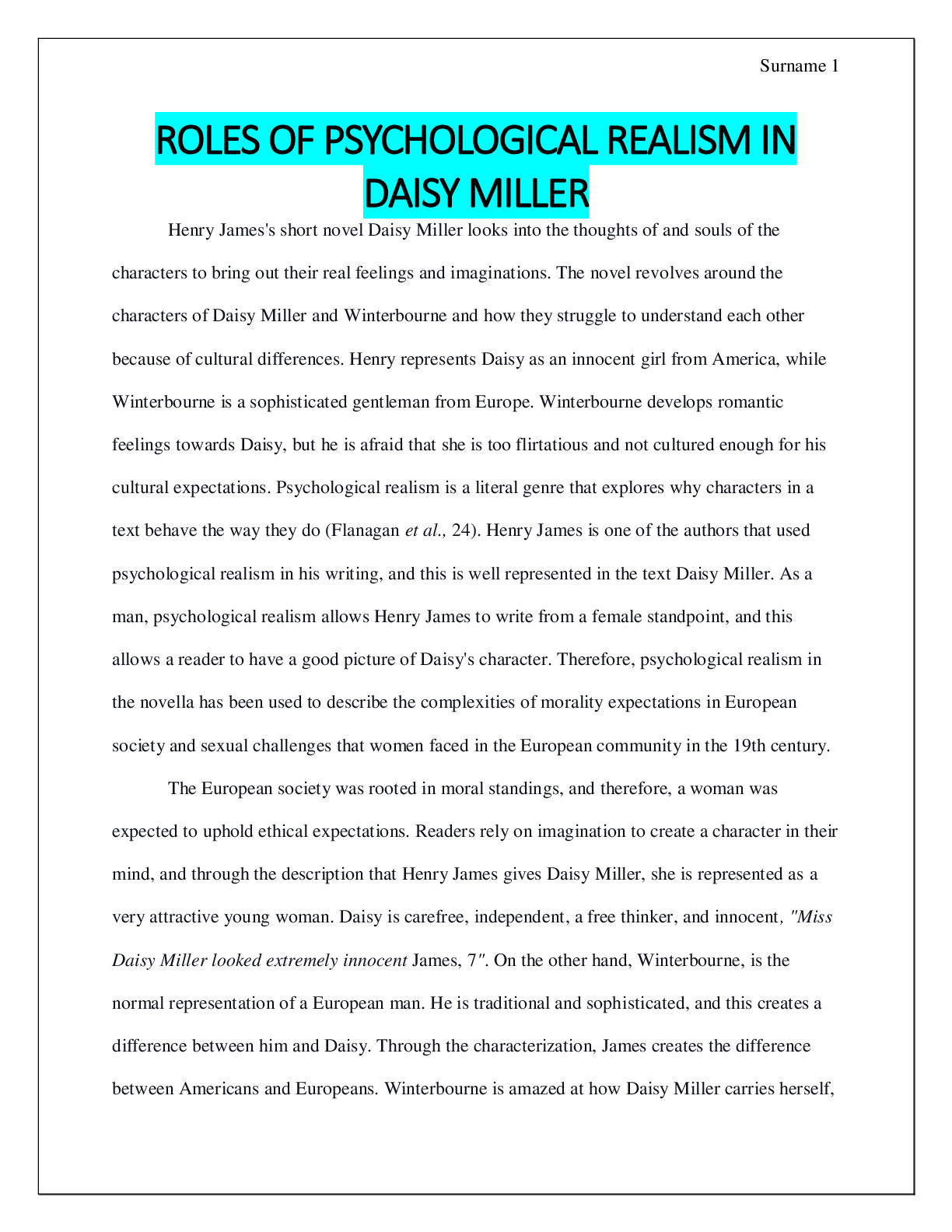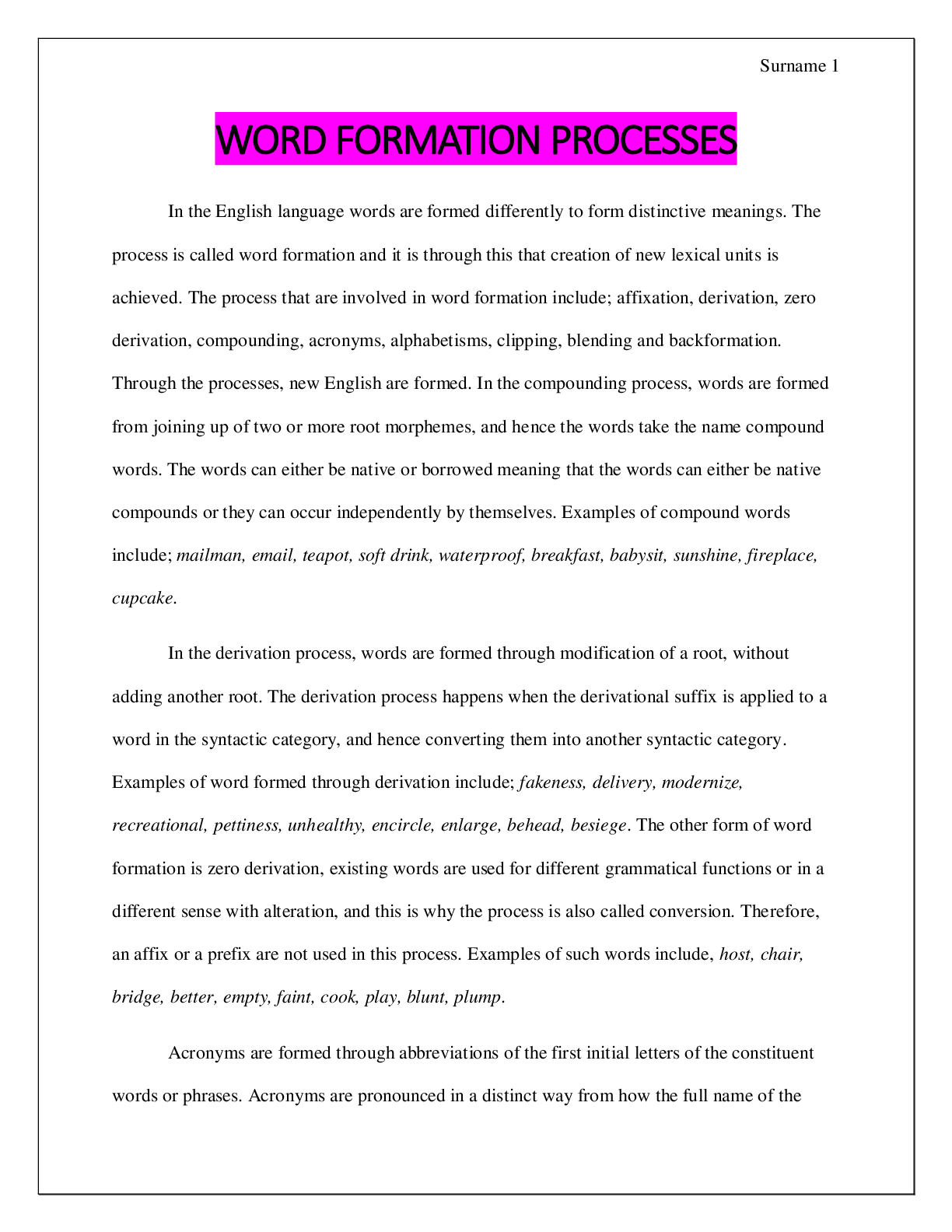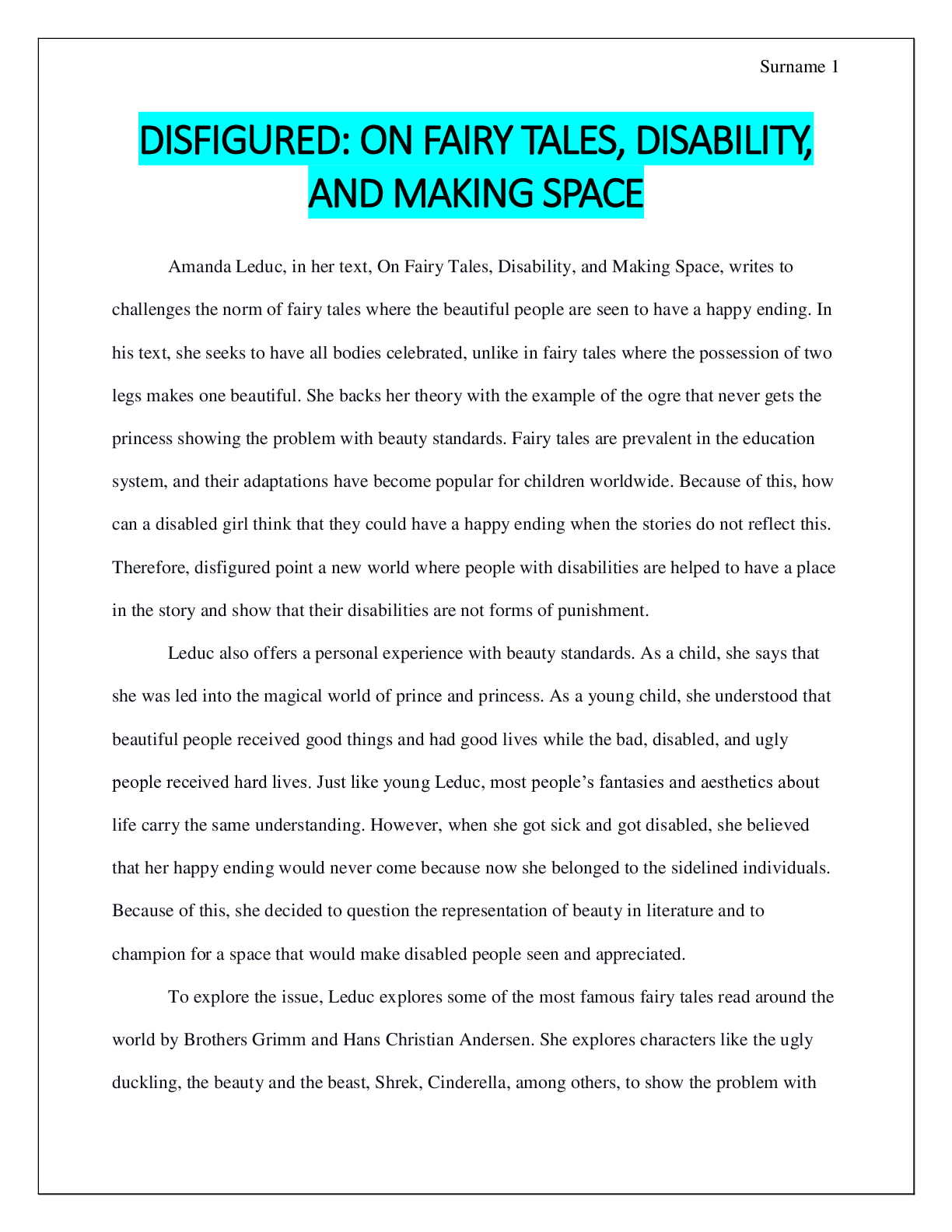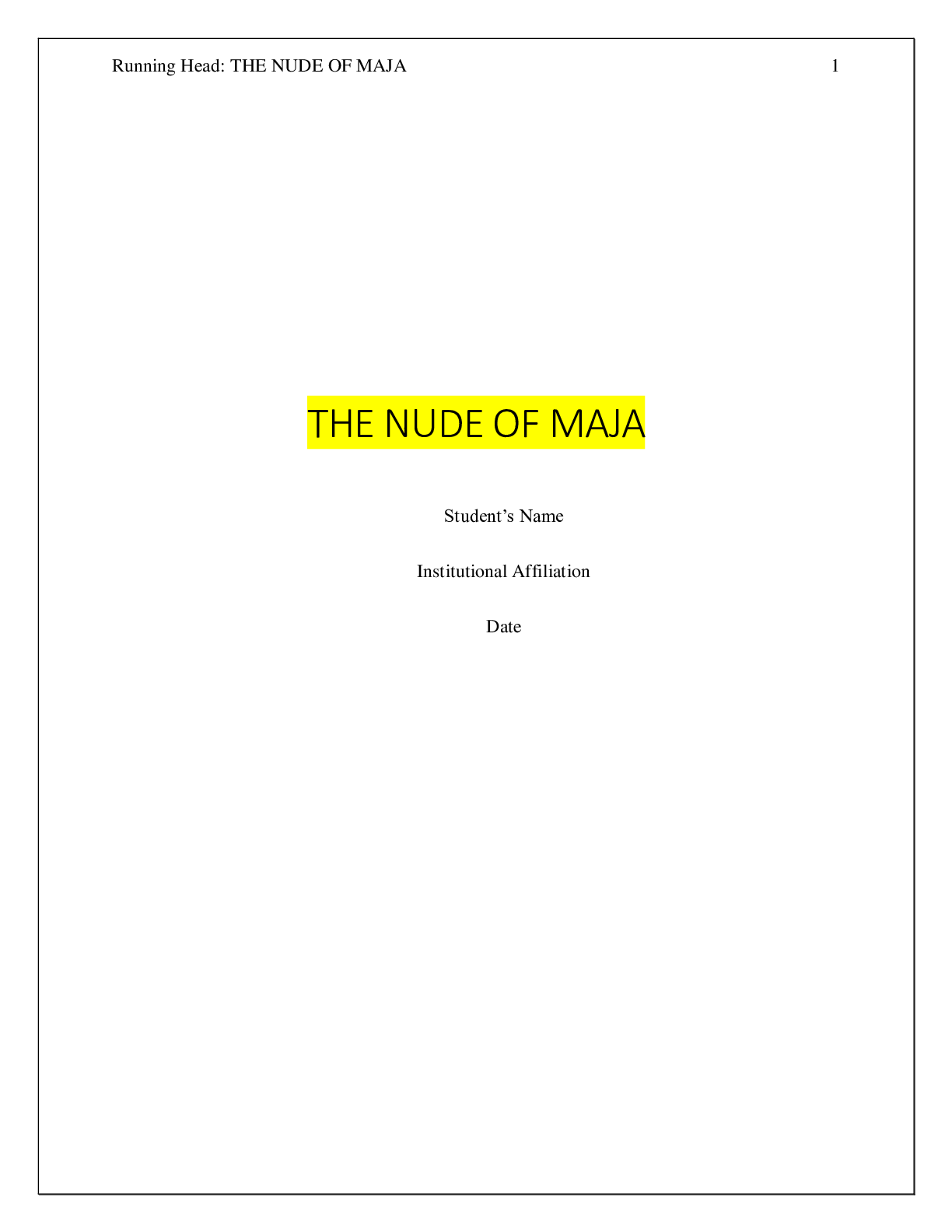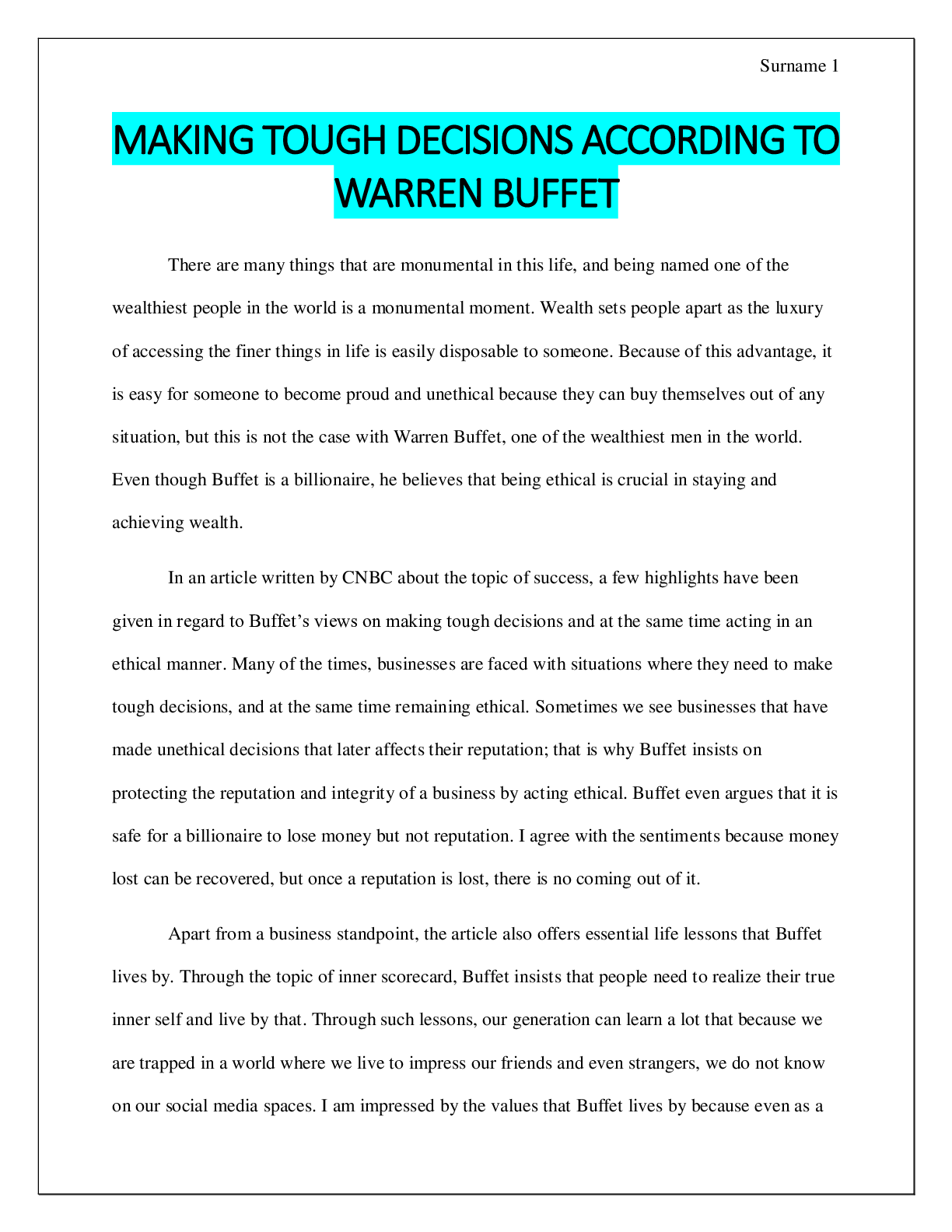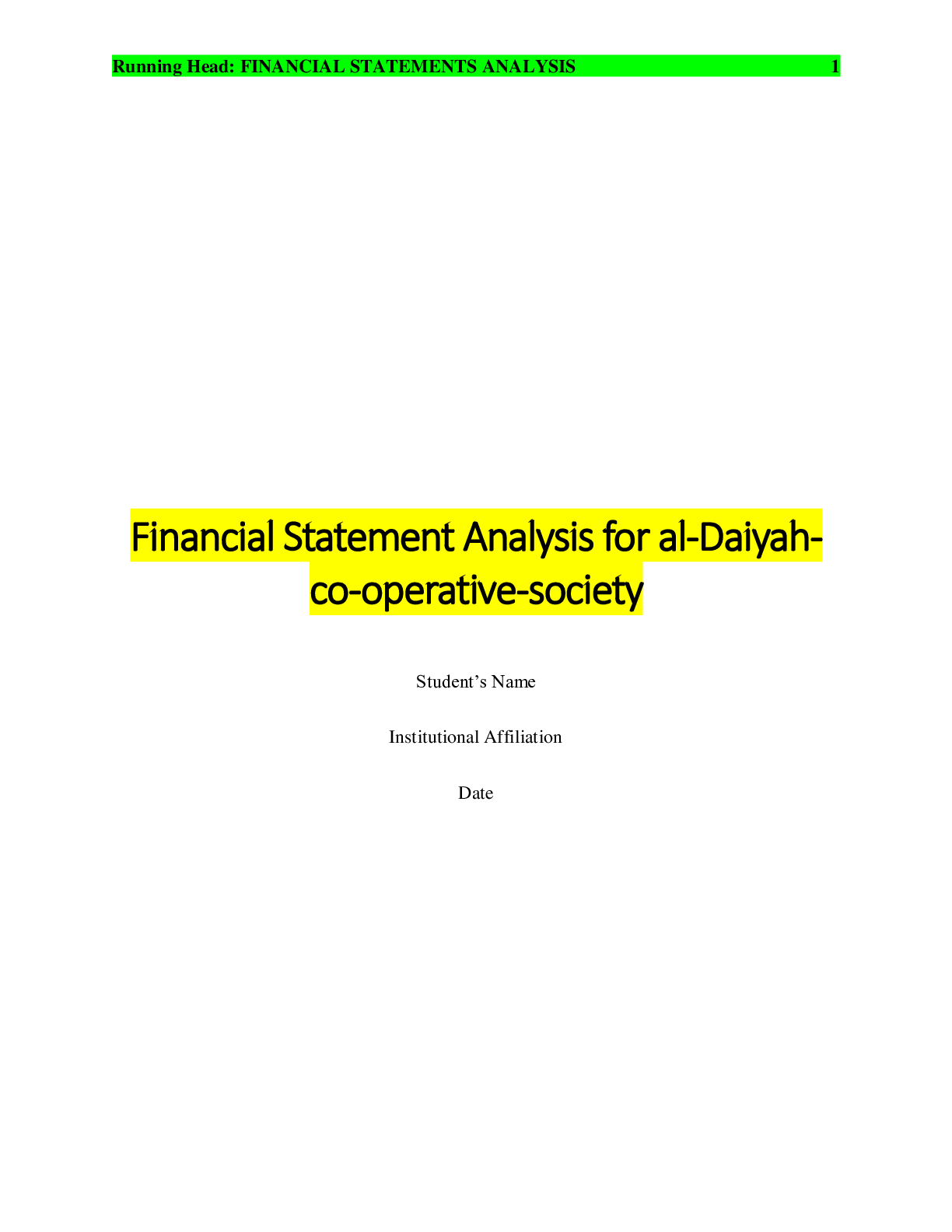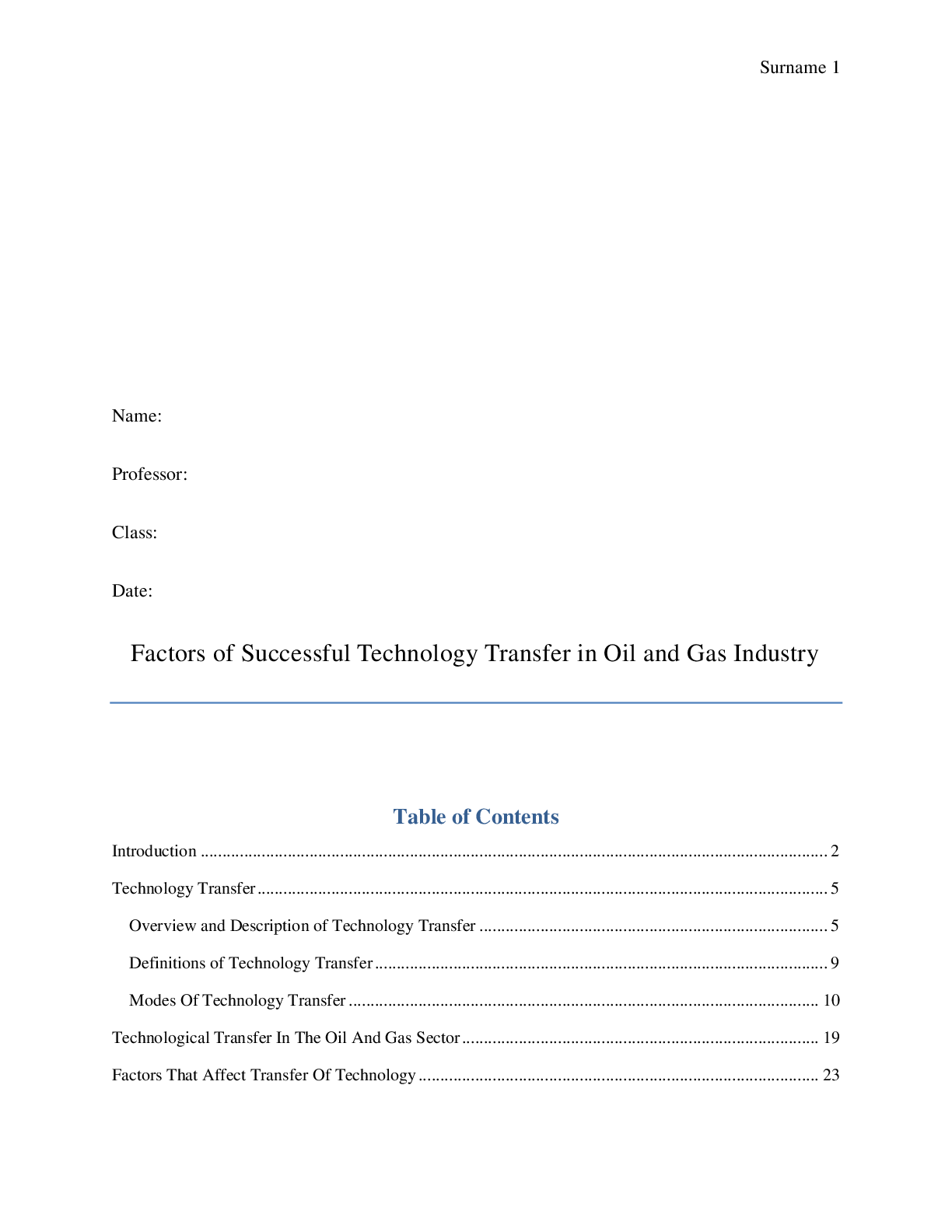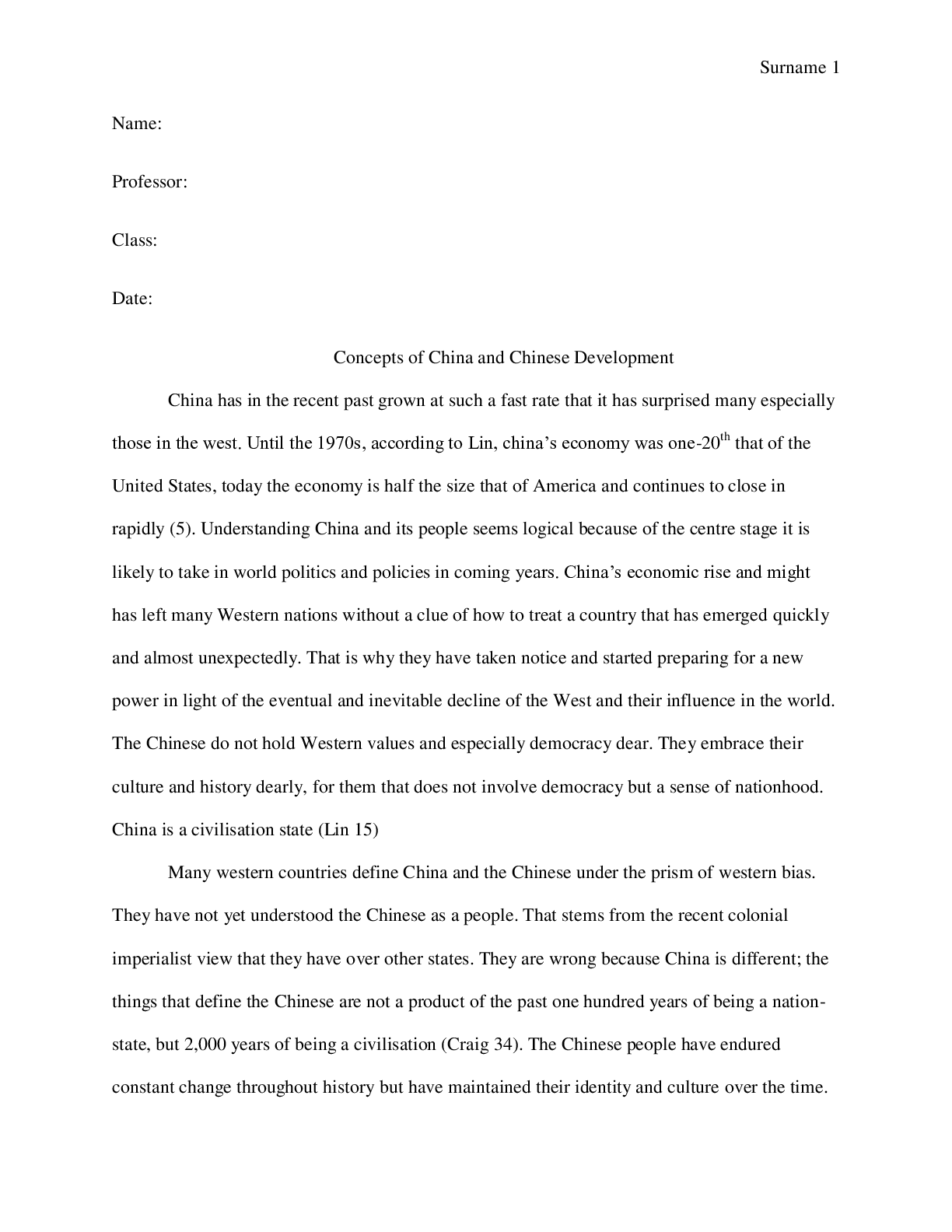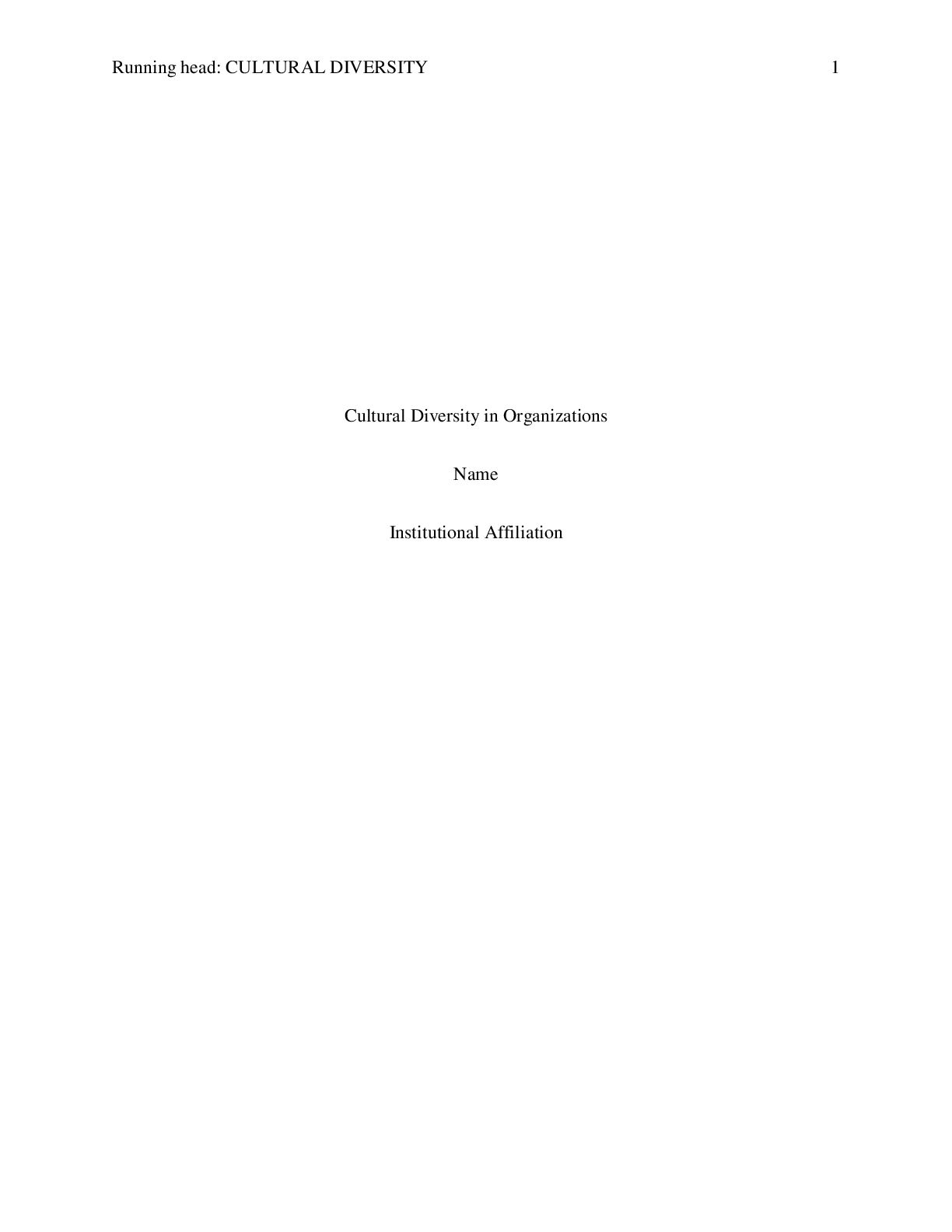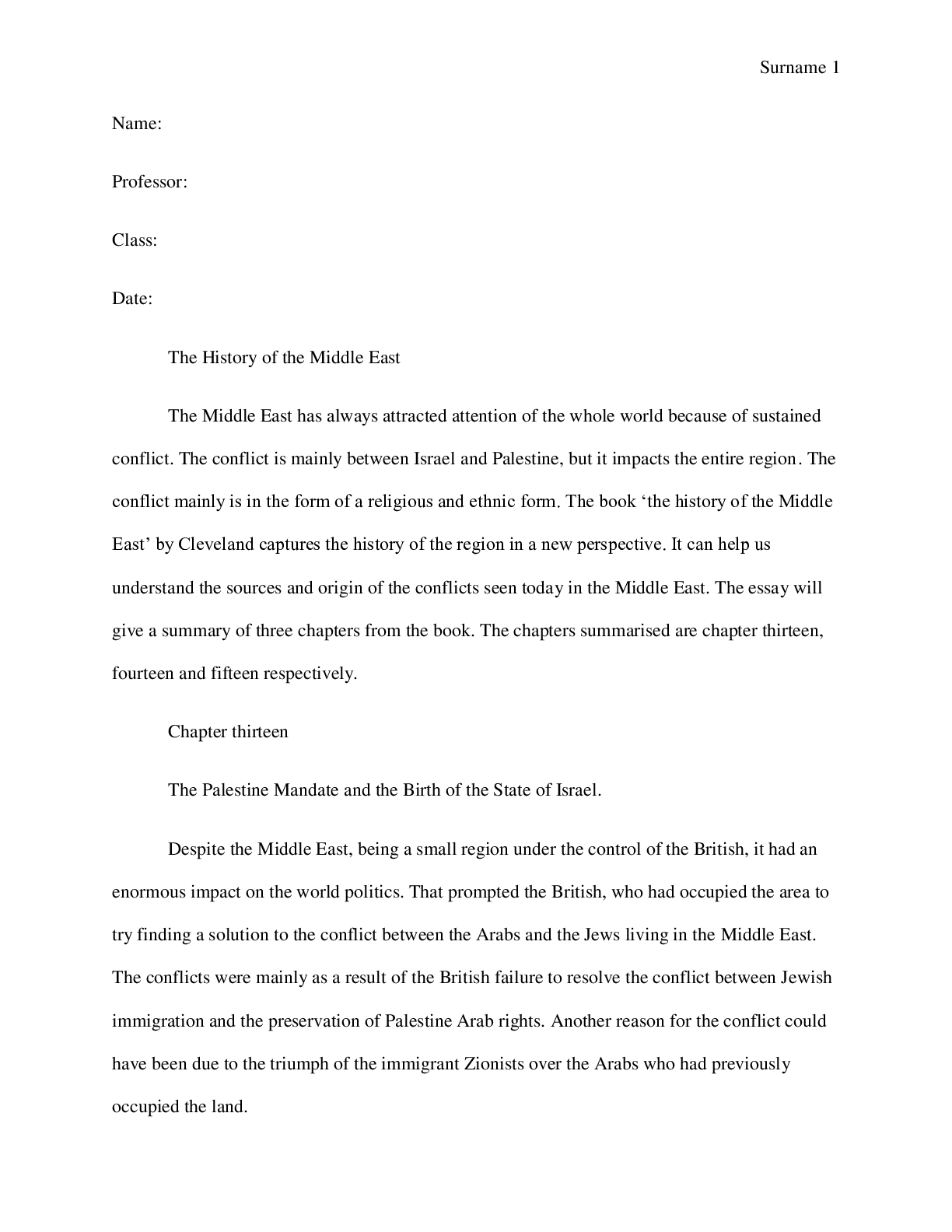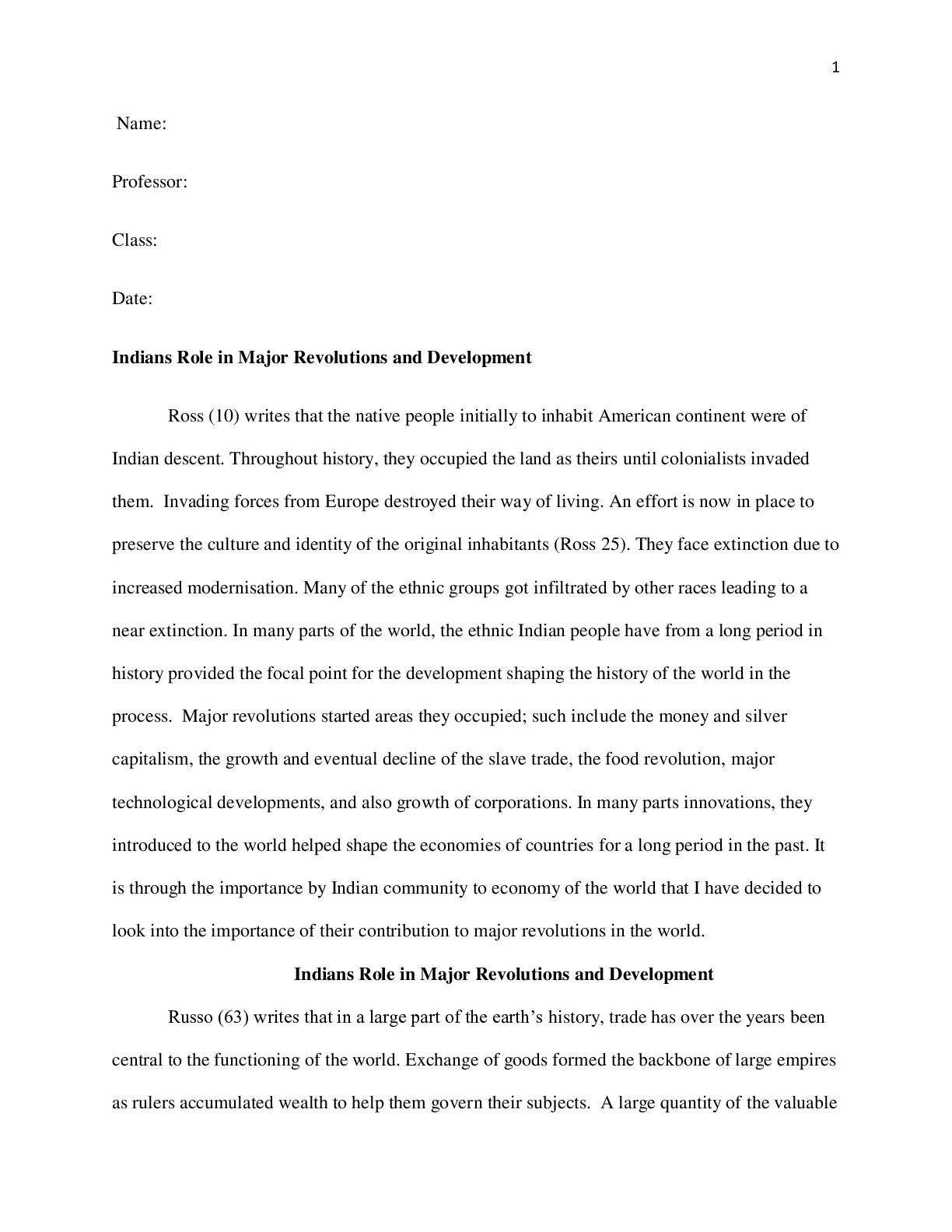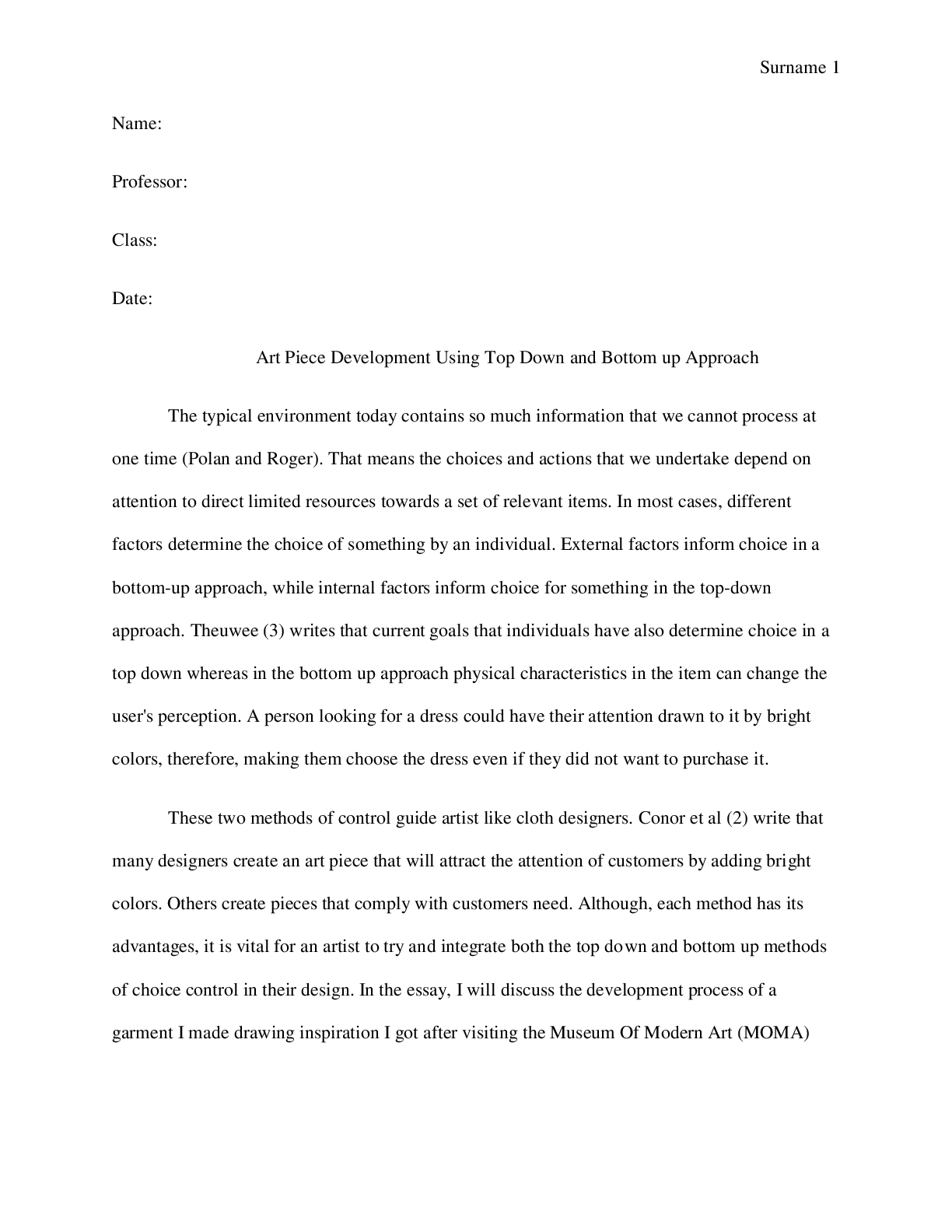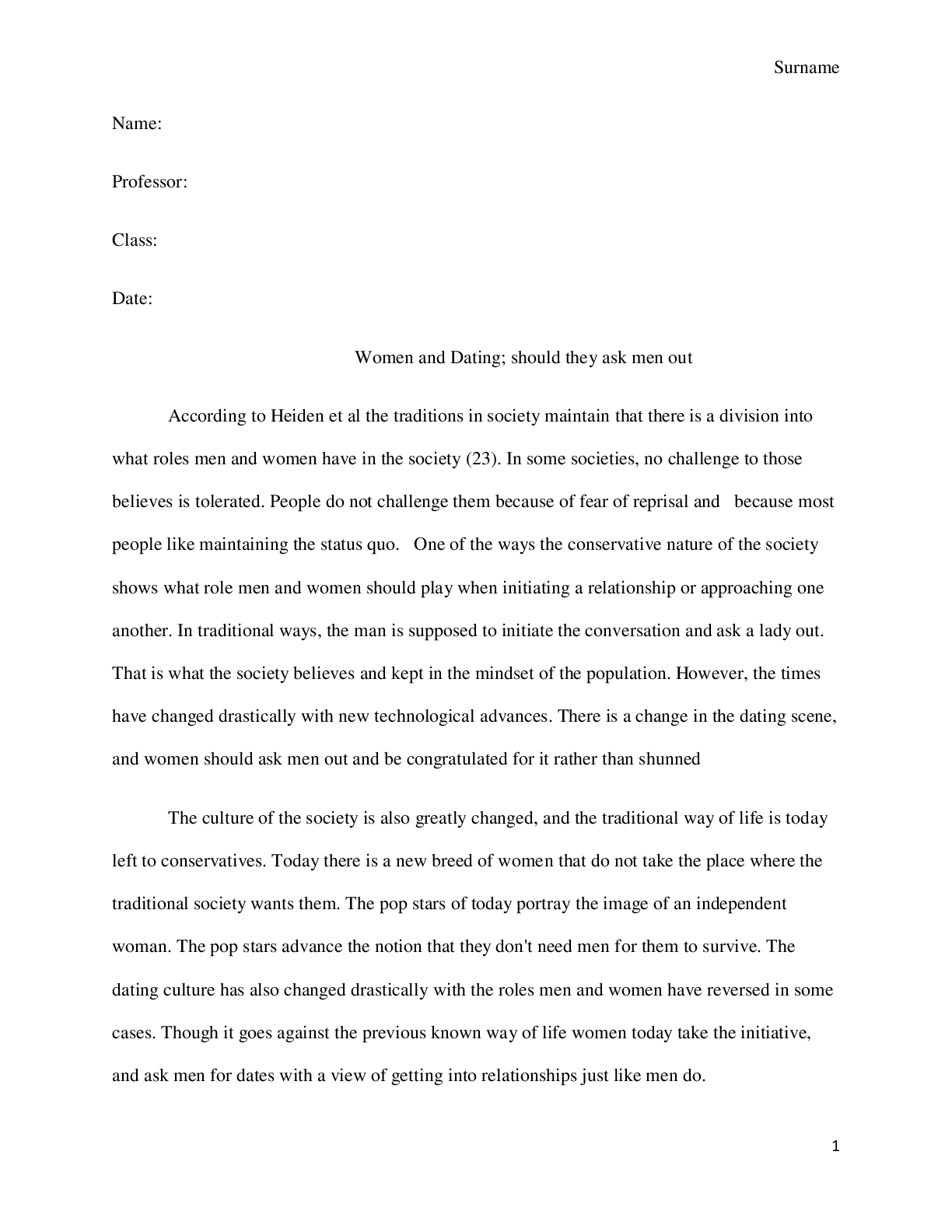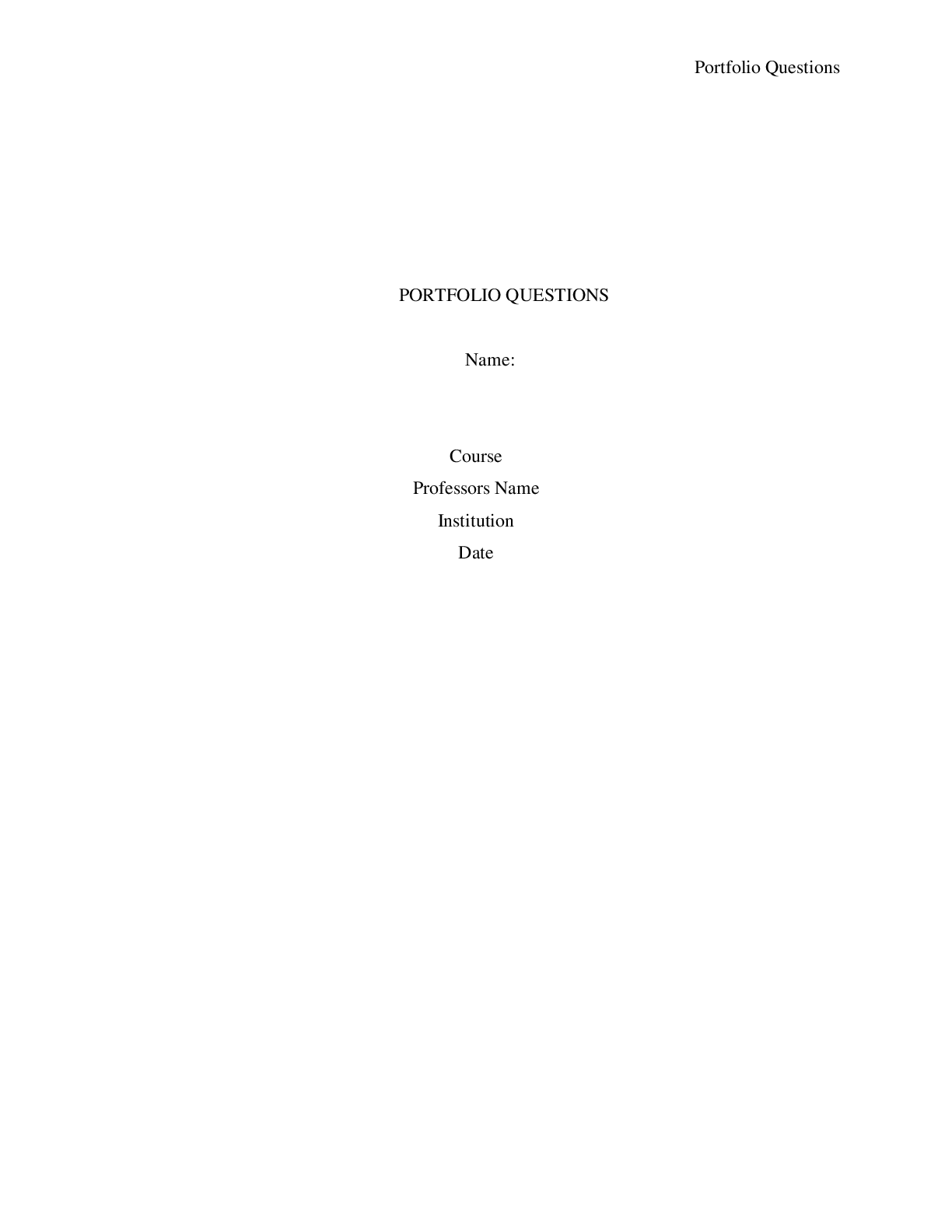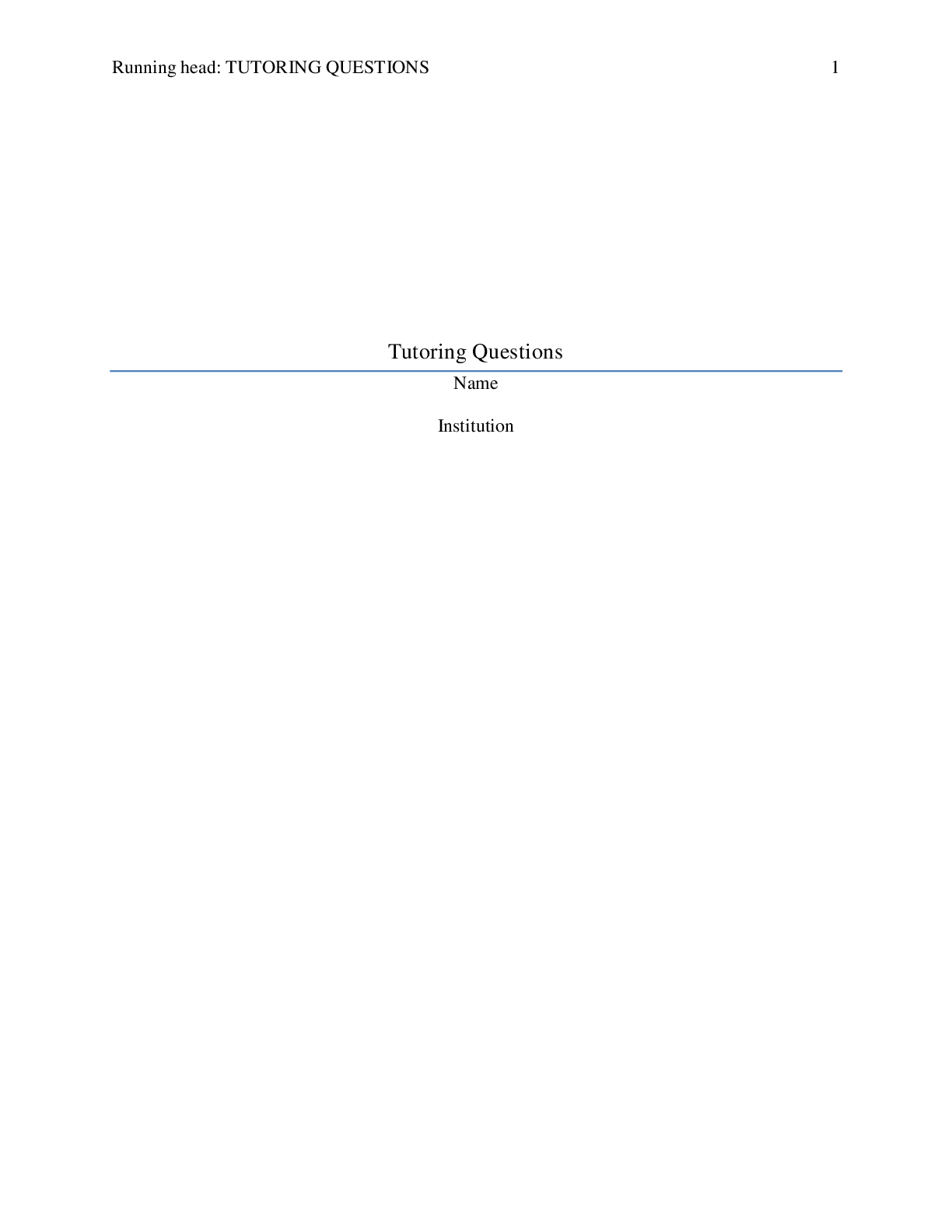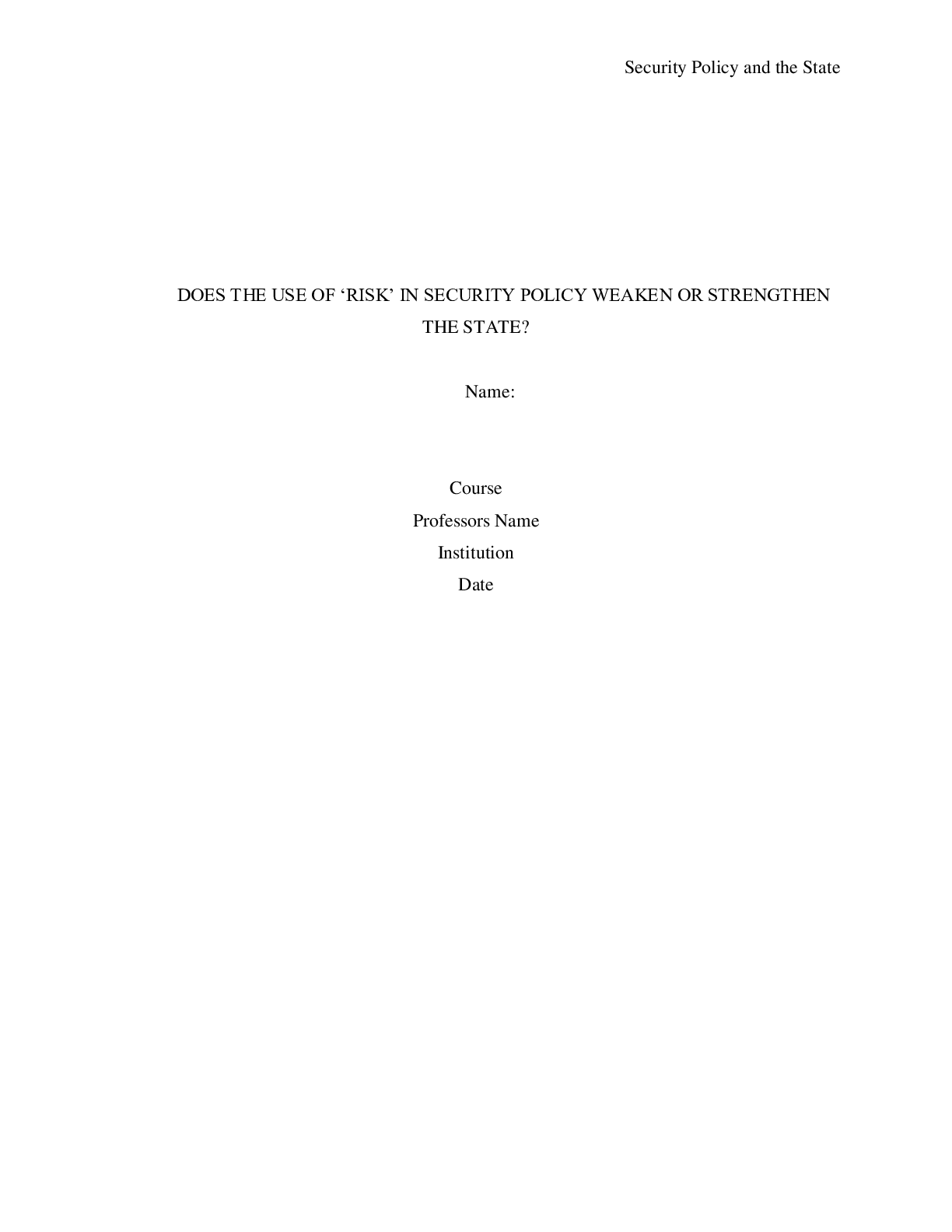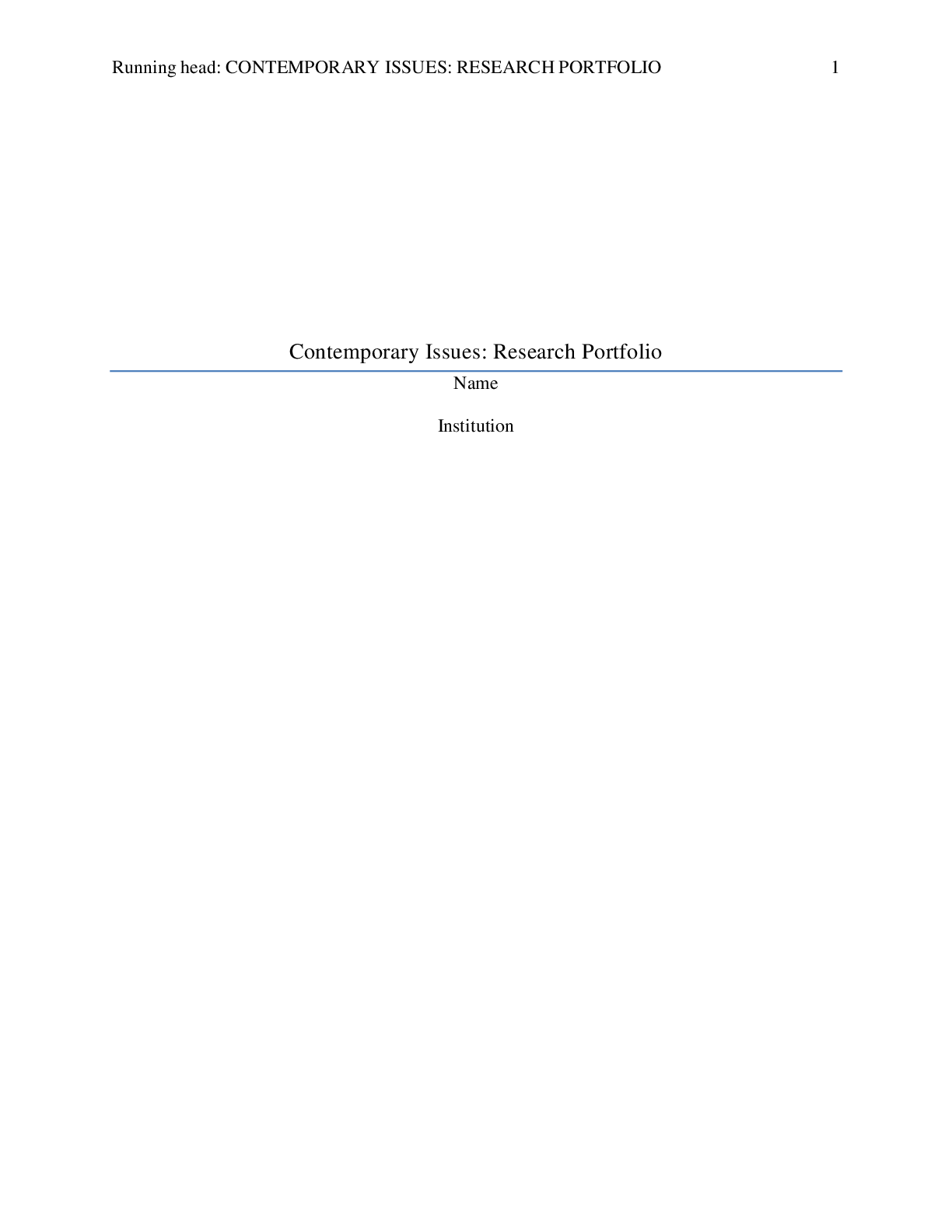Linguistics > ESSAY > LINGUISTICS: SEMANTICS (All)
LINGUISTICS: SEMANTICS
Document Content and Description Below
SEMANTICS Student’s Name Institutional Affiliation Date In our everyday day to day conversations, we talk and we do this by using words, phrases and sentence. Linguistics is divided ... into different fragments that help in understanding of the language structure scientifically. Language is scientific because it has a sound, it is linear, systematic, meaningful, arbitrary, system of contrast, unique, creative and similar. Language is significant in our communities because it separates people from each other making each community significantly distinct from each other. Linguistics are divided into structural hierarchy into groups like phonology, morphology, syntax and semantics. Through the scientific study of language, semantics is explained as the relationship between words and how meanings are drawn from these words. Different people draw different meanings from words and it is through semantic that an understanding of the meaning truth and reference is drawn to help create a universal understanding of words. Therefore, the following research will explore the topic of semantics and show how it is the view of logic to language. Semantics is a Greek word meaning signify and therefore, semantic is the study of meaning of words. The study is involved in explaining the relationship between words and other symbols that create a meaning in phrase. The combination of parts of a sentence and the meaning of each parts creates the complex meaning of a word. Meaning plays a very significant part in any part of a speech because it helps in understanding what the speaker is talking about. Without meaning to a language, all utterance has no use as communication will not be facilitated, and this is because meaning of words cannot be facilitated by phonemes and syllables rather, they are facilitated by morphemes and words. According to (Lewis, 1976), semantic play an important role in deconstruction words and hence proper formation of words, and to explain the theory of semantics different theories are explored and they include; formal semantics, conceptual semantics, cognitive semantics, lexical semantics, cross-cultural semantics, and computational semantics. Through the theories of semantics, the understanding of how different meanings of words are explained through their process of formation. Formal semantics help in the identification of domain specific mental operations. The theory uses techniques from philosophy, logic and math to explain the meaning of words, by creating a relationship between reality and language, possibility and truth. The theory is further explained syntax theories like generative syntax or Combinatory categorial grammar providing a model that is based on mathematical tools. For example, the structure, if…. then as a question breaks the underlying meaning as a consequence of events and therefore, holds a mathematical technique. Conceptual semantics is a semantic theory that explains the properties of an argumentative structure (Löbner, 2013). It therefore deals with the most basic forms of words and concepts before human feelings are added to the context of the sentence structure. Because of this, the theory uses the assumption that syntactic phrases and properties of a word’s meaning are structures that head them. Because of this theory, it is easy to explain that the differences in meaning of words is created by the correlation of words in the syntactic structure. Therefore, to have a clear understanding and the meaning of the words, the internal structure of the word is considered and this created a deep understanding of meanings of words. Through semantic primitives, the theory is clearly explored as it shows the small structures that form the words. For example, the word ring means a form of jewel that is worn on the finger but the ring can also be used to indicate the action of calling someone through a telephone, and this is where context is important in explain the meaning of words. Conceptual semantics are a gateway to opening of conversations on denotation and connotation. Cognitive semantics theory creates an approach of meaning of words from cognitive linguistics. The theory is based on the understanding that use language draws upon general cognitive resources and not a special language module. Lexical semantics is a theory that shows the meaning of a word (Cruse, et al., 1986). It does this by deconstructing words in a line to understand the context in which the words were used. It might include the study of verbs, nouns, adverbs, suffix, prefix, roots, and prepositions individually. Cross-cultural semantics looks at the disciplines that have made contributions to the certain words. Therefore, these theories are important in explaining how meanings of words are derived from sentence structures. In the architecture of meaning in a sentence, the divisions are broken from morpheme meaning, word meaning, phrasal meaning, sentence meaning, and utterance meaning. In English, words are composed of morphemes and each morpheme has a meaning and a function. Some of the important lexical items that are used in creating meaning of words include; dictionary definitions, imagery and sensory information, and referential. In sensory information, words often create mental images that are important in creating the meaning words. It might also create other sensory information creating the meaning of a word. For example, the words, salty, sweet can be created through sensory information that we already have from tasting things. To create the meaning of words, semantic properties like breakdown of words can be used to create meaning of words (Riemer, 2010). Another important factor in semantics is Hyponyms & Hypernyms. In Hyponyms the meaning of one word is included in the meaning of another word. By considering hyponymous relations, the meaning of words in some type of hierarchical relationship is considered. for example, the word rose is a Hyponym of flower as it falls in that category making flower a Hypernym. Synonyms are also important in semantics as they represent words that have the same meaning. For example, locomotive and vehicle are words that have the same and when used in a context they will give the same meaning. Antonyms in semantics are words that seem to have opposite meanings. For example, dead-alive have an opposite meaning to each other. Compositional semantics is also important in semantics as it explains phrasal and sentence meaning. It shows that understanding a sentence involves knowing what circumstances a sentence can be true, and this will bring out the meaning of words. Conclusively, an important part of studying language is having a clear understanding of what the words in the language mean. With a good understanding of meaning, then it becomes easy to understand the context into which the words have been used. Through semantics, the understanding of meaning is explained. Semantics are therefore are important factor in linguistics and through the different theories like lexical, structural, cognitive and compositional semantics theory, the understanding of the process is made effective. Semantics therefore provides meaning, reference and truth of a word. References Cruse, D. A., Cruse, D. A., Cruse, D. A., & Cruse, D. A. (1986). Lexical semantics. Cambridge university press. Lewis, D. (1976). General semantics. In Montague grammar (pp. 1-50). Academic Press. Löbner, S. (2013). Understanding semantics. Routledge. Riemer, N. (2010). Introducing semantics. Cambridge University Press. [Show More]
Last updated: 1 year ago
Preview 1 out of 6 pages
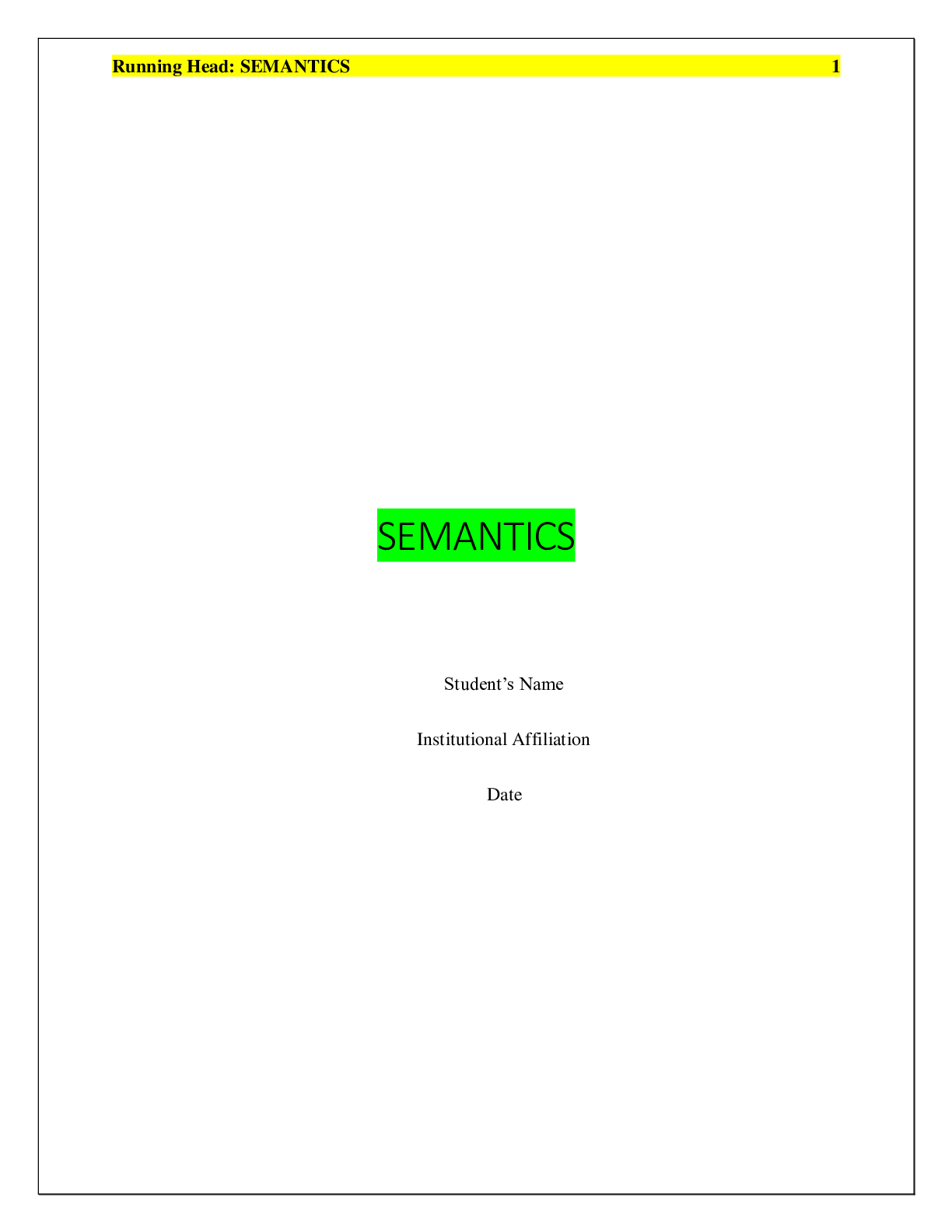
Reviews( 0 )
Document information
Connected school, study & course
About the document
Uploaded On
Sep 08, 2021
Number of pages
6
Written in
Additional information
This document has been written for:
Uploaded
Sep 08, 2021
Downloads
0
Views
64



